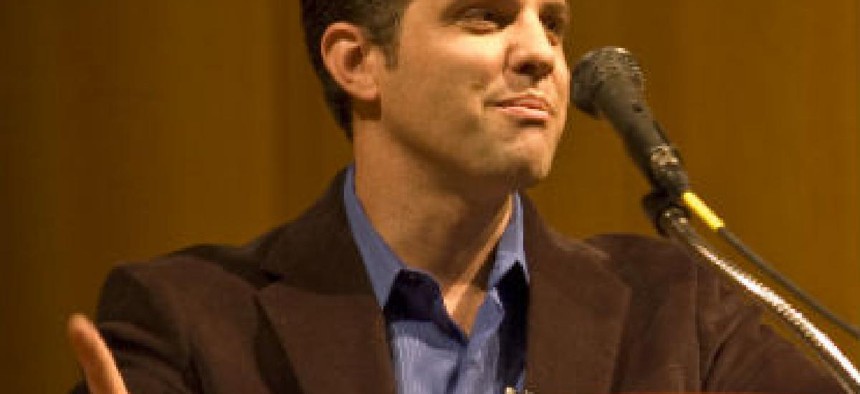Watch out for 'the guy in cubicle 3B'

It's easier to recruit an insider than to hack from the outside, warns the former FBI man who had a leading role in catching notorious spy Robert Hanssen.

Former FBI operative Eric O'Neill, shown here at an unrelated event, warned a Washington audience on April 2 that internal threats are at least as important as more-traditional cyber attacks. (Photo: Wikimedia Commons)
Neither Robert Hanssen nor Edward Snowden had to hack the U.S. government to obtain classified information -- they were already inside.
As agencies scramble to develop firewalls and countermeasures to combat cyberattacks from the outside, experts are stressing (yet again) that it's important to remember the enemy within.
"It's much easier to recruit someone from within an organization that already has access than to hack from the outside," said Eric O'Neill, the former FBI operative who was assigned to take down Hanssen. One of the most notorious spies in U.S. history, Hanssen is now serving life in prison on 15 counts of espionage.
"The best firewall is not going to stop the guy in cubicle 3B who was disgruntled, recruited, greedy, compromised, who has just changed his ideology and is already within your network defense," O'Neill said in keynote remarks April 2 at a Spy Museum forum titled "Keeping Secrets: How Technology Can Help Defeat the 21st Century Spy."
So what will?
O'Neill stressed the importance of ensuring that information is accessible only to those who need to see it, a focus of reform efforts at the NSA and elsewhere in the wake of Snowden. And while he didn't offer a top 10 list of ways to deal with insider threats, he did warn that the problem of internal security extends beyond government.
"If you have something that someone else might be interested in, whether it's the competitor up the street or another country overseas or a competitor overseas, then someone is trying to steal it," he said.
More than a decade after Hanssen's 2001 arrest, the need for adequate cyber security has increased exponentially.
Threats are as diverse in magnitude as they are in provenance, from domestic pranksters to terrorist groups to foreign governments.
The end of the Cold War brought no respite, and the development of new technologies in the intervening decades has only heightened the challenge.
"Traditionally you thought about hackers trying to get in from outside," O'Neill said. "But cybersecurity has become a counterintelligence tradecraft to catch spies. And the trusted insider can be the most damaging spy."
Whether it was Snowden's infamous thumb drive or Hanssen's personally coded Palm Pilot, the result was painfully similar.
"Both crippled their respective agencies by providing a massive amount of ways and means in information. And as a result, we have to question every program out there," O'Neill said.





